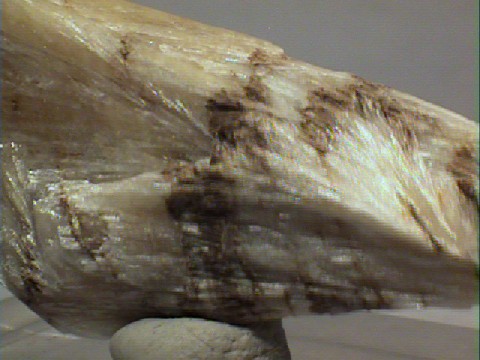 THE MINERAL HYDROBORACITE
THE MINERAL HYDROBORACITE
- Chemistry: CaMgB6O11 - 6H2O, Hydrated Calcium Magnesium Borate.
- Class: Carbonates
- Subclass: Borates
- Uses: As a minor source of boron and as mineral specimens.
- Specimens
Hydroboracite is an uncommon borate mineral.
It is one of the borate minerals that form silky, fibrous crystal clusters.
Ulexite is another more common borate that forms similar fibrous aggregates and thus the two minerals are not easy to distinguish.
Hydroboracite's silky luster is quite attractive.
PHYSICAL CHARACTERISTICS:
- Color is colorless, white to brownish.
- Luster is vitreous to silky.
- Transparency: Specimens are translucent to transparent.
- Crystal System is monoclinic.
- Crystal Habits include acicular or fibrous radiating clusters and finely granular masses.
Tiny crystals have a wedge-shaped termination.
- Cleavage is perfect.
- Fracture is uneven.
- Hardness is 2 - 3
- Specific Gravity is approximately 2.2 (below average)
- Streak is white.
- Associated Minerals are
halite,
anhydrite,
tunellite,
colemanite,
ulexite
and other borates especially
borax.
- Notable Occurrences include the type locality at Lake Inder, Caucasus Mountains in Southwest Asia; Harz Mountains, Germany; the Furnace Creek Formation of Inyo County and the Boron open-pit mine, Kern County, California, USA.
- Best Field Indicators are crystal habit, associations, locality, luster and density.
 THE MINERAL HYDROBORACITE
THE MINERAL HYDROBORACITE







